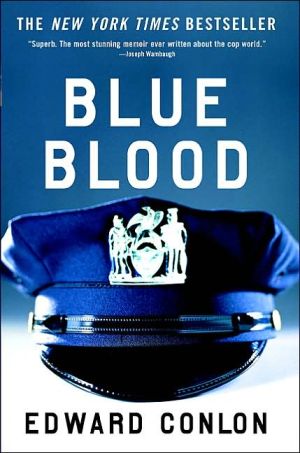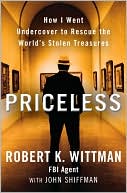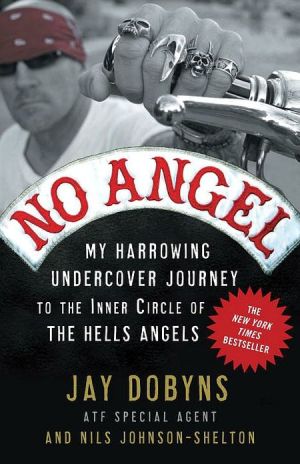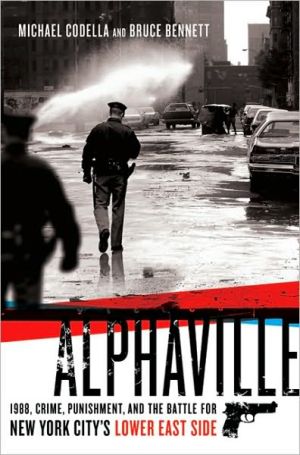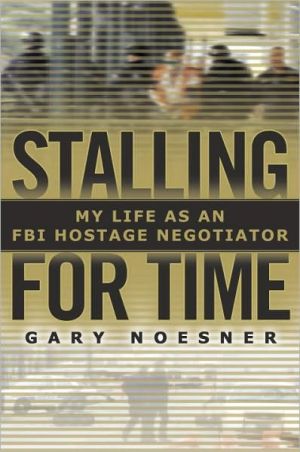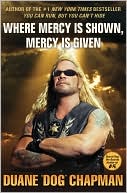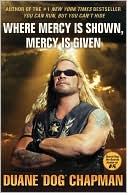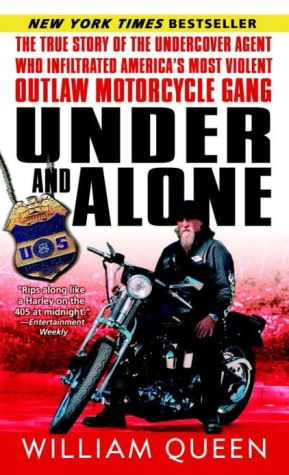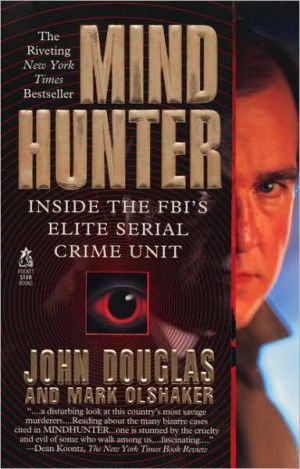Blue Blood
"A great book... with the testimonial force equal to that of Michael Herr's Dispatches."—Time\ Edward Conlon's Blue Blood is an ambitious and extraordinary work of nonfiction about what it means to protect, to serve, and to defend among the ranks of New York's finest. Told by a fourth generation NYPD, this is an anecdotal history of New York as experienced through its police force, and depicts a portrait of the teeming street life of the city in all its horror and...
Search in google:
From the fourth-generation NYPD officer and author of The New Yorker's "Cop Diary" columns comes an epic heart-and-soul dissection of what it means to protect, to serve, and to defend among the ranks of New York's finest. The Washington Post - Zac Unger Conlon is a cop's cop and his book, a dazzling epic of street life and rough camaraderie, is far more rewarding than any disgruntled Serpico-style tell-all could ever be … Blue Blood doesn't attempt to sanitize an entirely human institution. Instead, Conlon presents the truth as he has lived it.
ONE\ As I took my first steps on patrol as a New York City police officer, heading out from the precinct onto East 156 Street toward the projects on Courtlandt Avenue in the South Bronx, a deep voice called out, "There's a new sheriff in town!" We had been told that people would know we were rookies by the shine on our leather gear and the dim, soft expressions on our faces-people can smell new cop like they smell new paint. When I grinned bashfully and turned toward the voice, I saw it was speaking to us, but not of us. It belonged to a tipsy derelict in an enormous Styrofoam cowboy hat, half-swaggering and half-staggering down the street. I thought of the NYPD Department Values, which begins, "In partnership with the community, we pledge to protect the lives and property..." During our time at the Academy, we would recite it every day in Gym, just as my high school track team would say a Hail Mary before a meet. The partnership with the community had not begun as expected, but it might be said that education is an adjustment of expectations, and although I was done at the Academy, my education had barely begun.\ I was assigned to Police Service Area 7, which covered the public housing in five South Bronx precincts: the 40th, 41st, 42nd, 44th, and the 46th, with the heaviest concentration in the Four-O and Four-Two. Like the word "precinct," we used "PSA" to mean both our building and the area it served. On the first day, the PSA was hung with purple and black crepe bunting, for a cop from the command who had died of AIDS. We knew nothing beyond that fact, but as we waited in the muster room, a cop stormed in and began to yell at us: "I don't give a fuck what these assholes say, Mike was a good guy and a great cop, so if you hear different you can tell them to fuck themselves from me!" He left as abruptly as he arrived. We were bussed up to his wake, where we barely knew what to say, even to each other. Such was our introduction to the inner life of the precinct-good-hearted if sometimes misguided, bound by duty and tradition and semi-private heartbreak-into which most of us did not rush to insinuate ourselves, knowing it would find a place for us in time.\ We were met with amusement or abuse, equally unexpected and unprovoked: a lieutenant might hold roll call and scream at us as if we were late with the rent, or a sergeant would begin by saying, "Thanks for stopping by." Some of the older cops watched over us and others looked down at us, and all of them told us how we'd missed out: on the greatest cops and the worst crime, and especially the Housing Police, "the best kept secret in the city." Three months before, New York City had three separate police departments-Housing, for the projects; Transit, for the subways; and the NYPD-which were then combined by Mayor Giuliani in April 1995, into one department of nearly forty thousand police. Even our new station house-a state-of-the-art cinder-block cube, with plenty of lockers and a gym in the basement-was seen as a kind of rebuke; it was as if the old PSA, which had comprised a few rooms in the basement of a project, and was prone to rat infestations and floods, told an awful truth that we were too late to learn. We'd never know anything but the NYPD, and it was a bigger, stiffer, colder job, as we'd find out when we called to take a day off, or were on patrol and needed to knock down a door. We were little players, late for the game.\ They told us things we didn't need to hear, but often had no answer to what we asked:\ Why do we call it the "four-to-twelve" shift, if it starts at three?\ Why do we wear clip-on ties?\ Where do we eat?\ In fairness, the responses to these questions-"I don't know"; "To avoid strangulation"; and "Good luck!"-may not have been any different from what I'd answer now.\ We were like the equipment we carried: dangerously new. I'd put on my blue polyester slacks and shirt; black boots; an equipment belt for holster and gun; two magazines, each holding fifteen rounds of 9-millimeter ammunition; radio, mace, handcuffs, flashlight. The equipment belt was snapped to the uniform belt with four "keepers." The bulletproof vest-"bullet resistant," technically-is made of two double panels of a synthetic material called Kevlar, inside a cloth carrier that holds it around your torso like a lead X-ray smock. One cop wrote phrases from the Bible on his, "Yea, though I walk in the valley of the Shadow of Death..." Other cops wrote their blood type. The vest showed in the neck of the summer shirt, which has short sleeves and an open collar, but if your T-shirt showed above that, some bosses would yell at you, or write you up, or make you change. The shield was pinned to the shirt with a kilt pin, over a black cardboard backing that held the nameplate on the bottom and medals on the top. Some cops' medals stacked up so high that the backing rose above their shoulders. The clips for the nameplates didn't hold, and someone found that the stoppers of crack vials worked better. They were not hard to find. I kept a prayer card to the Archangel Michael, patron saint of police, in my hat. The uniforms made us look alike, as intended, and since I said little, I didn't so much fit in as fade in.\ We had a few weeks of field training, during which a cop named Vinnie Vargas led six of us around Melrose and Jackson Houses, adjoining projects a block away from the precinct. We worked as a group, at first-Paul Tannura, Matthew Goodman, Angel Suazo, Kim McLauren, Jose Velez, and myself-and then in threes, where McLauren, Velez, and I split off, and then with Velez alone. We wandered around, checking the parking lots and rooftops. Once a day, a sergeant or a lieutenant would raise us on the radio for the "scratch," to sign our memo books and tell us we were doing great or awful work, arbitrarily it seemed. A three-car collision occurred before my eyes, and the job took me five hours to complete, listing the license, registration, and insurance information, taking statements and diagramming the positions of each car and everyone in it. When I finally got it down, I felt like I could have learned calculus and French. There were three or four radio runs a day, mostly for domestic disputes and stuck elevators, though in the evenings we would hear gunshots. We would run toward them, holding on to our radios and nightsticks so they wouldn't fly out of our belts, and miss them so completely we were like kittens hunting a flashlight beam on the floor. In the precinct lunchroom one night, I heard shots and looked out the window to see two young men walking down the block toward me. We stared at each other and then, in unison, they pointed their thumbs back toward the projects. I nodded and went back to eating. The gunshots came from the drug dealers, at war or at play, but to wean a team of rookies on drug collars is a tricky business, and Vinnie decided against it. While this decision was prudent, it allowed the rampant crack and heroin trade to take place unobserved all around us; the dealers could have had snowball fights with the stuff for all we'd have noticed. The beat cop in Melrose-Jackson was named Scott Mackay, and I liked the way he handled himself, friendly or forceful as the circumstances demanded. I told him I thought the post was a little on the slow side and he laughed at me.\ When field training was over, we crowded around the board in the muster room to find out our assignments. Any of us could be a Project Community Officer (PCO), a beat cop assigned to a particular project, or on a Target Team, one of five or six cops assigned to a sergeant, moving from project to project every few months, or in a squad car. Squad was the most sought-after, in that you rode instead of walking, and it fit our expectations of a grown-up, cop-like, lights-and-sirens deal. But I had a city kid's indifference to cars-my driver's license was only a few months old-and most PCOs and Target Teams had either Friday and Saturday or Sunday and Monday off, while the three squads-day tours, four-to-twelves, and midnights-worked a rotating chart of five days on, two days off, five days on, three days off, five days on, two days off, and so on, so that your weekends fell on the weekend only a few times a year. I wanted PCO and I got it: Post 151, Morris Houses in Claremont Village, in the Four-Two. A few cops said, "You're in for it now. Watch yourself."\ Claremont Village was one of the largest projects we covered, and it combined Morris, Butler, Webster, and Morrisania Houses. There were thirty buildings, each between sixteen and twenty-one stories tall, set around courtyards and playgrounds. Like most public housing in New York City, its design was inspired by the chilly optimism of the forward-thinkers of the mid-century. For them, the tall towers and wide plazas were "cities of the future" that would supplant the stacked rows of stuffed tenements where the poor had lived for the past century. From a certain distance, or at a certain angle, you could see what they were getting at: you could walk through the grounds beneath shady aisles of sycamore and maple, past tidy lawns and playgrounds teeming with children. There would be families having cookouts, old ladies reading Bibles on the benches, pensive pairs of men playing chess. Armies of groundskeepers and janitors, as well as plumbers, carpenters, painters, and elevator repairmen, were employed to keep up the physical plant. Inside, many people kept immaculate and well-appointed apartments, and even some hallways were clean and cared for, decorated for holidays as festively as a window at Macy's. But the semi-public spaces-the lobbies, halls, stairwells-were, more often than not, literal toilets. The debris of recreational annihilation was everywhere: condoms, crack vials, syringes, and shell casings; graffiti was cleaned constantly only to return at once, while bullet holes and scorch marks lasted longer. Multiple bodily functions took place in the elevators and rooftops, where you saw beer cans and smashed rum bottles amid pools of piss, piles of chicken bones beside heaps of shit. You learned not to lean against walls so roaches wouldn't nest in your clothes. More than ten thousand people lived there, by my estimate, and maybe three thousand of them made it a ghetto.\ There were many bad neighborhoods in New York, but the South Bronx was a byword for "slum." There was no renaissance in its past, like Harlem, nor any signs of gentrification or renewal, as there were in parts of Brooklyn. "Fort Apache" was the nickname for the Four-One, just east of where I worked, though the Four-Two was used as the station house in the movie Fort Apache, The Bronx. Though the plotlines of interracial romance and police corruption were invented, the landscape of urban wasteland was not; "Fort Apache" was later known as "Little House on the Prairie," because so much of the area had burnt down. My uncle Gerry had been a firefighter in the South Bronx in the 1970s, and he told me that they were busier than the London fire department during the Blitz. In Report from Engine Company 82, the firefighter Dennis Smith wrote that they responded to as many false alarms as fires, and a man from his company was thrown from the truck and killed while responding to a false alarm pulled by a nine-year-old boy. A sign was put up on the call box, telling of the death and the danger of false alarms, but a false alarm was called in later the same day, from the same box, so they took the sign down.\ I was born in the Bronx, but my family moved just north, to Yonkers, when I was little. I'd taken my father's old apartment in the Bronx seven years before, the "four rooms of gloom over an airshaft" where he'd grown up. It seemed like we owned the neighborhood: Uncle Eddie, a cop for thirty-three years, never left it, and Uncle Gerry's last fire house was three blocks away, across the street from Uncle Nick's office. Nick was a doctor who had married my father's sister, Theresa, a nurse. When I was a kid, when we drove through Kingsbridge, my father would point out where Joe Louis and Mike Quill had lived, but what I remember most about the Bronx then was the windows of the abandoned buildings a mile to the south. The City had covered them with decals, of curtains and shades with flower pots, to suggest that happy families dwelt within instead of junkies and ghosts. Though the official motto of the Bronx was ominous enough, Ne cede malis-"Do not give way to evil"-one writer suggested that it should be, "Get out, schmuck, get out!" Our official flower was the corpse flower, a massive jungle plant so named because its bloom smells like rotting flesh. It was cultivated for the first time in North America in the Bronx, in 1937, and the borough president decided the eight-foot-tall prick-shaped flowers (Amorphophallus titanum) would prove an apt symbol for our future growth. However, the corpse flower might go for thirty years between blooms, which stink and die within days. I still can't figure out what they were thinking.\ For a long time, I kept to myself at work. I said hello to other cops but not much else. I always carried a book with me, slipping it under my vest or in a jacket pocket. When someone asked why, I'd say gravely, "You never know when nothing's gonna happen." Two other cops were assigned to Morris Houses, and six more to the other three projects that made up "the Village." Most of them tended to stick together on patrol. Though I took to walking by myself early on, when I didn't, I was with Angel Suazo and Osvaldo Rivera. We were all brand-new, and an odd threesome. Angel was Honduran, dark-skinned, and bald, an immigrant who had come here at the age of eighteen. His English was heavily accented and he was prone to saying things like "Cut me in half!" when he meant "Cut me a break!" He had been in the Army, and when I asked him what his assignment had been, he told me, "Communications." Angel was unflinchingly cheerful, and nothing could dent his good humor: he laughed as hard as the jokers did at the jokes about his driving a gypsy cab or the INS coming to take him away. He also had a nose like a bloodhound-he could smell someone smoking a joint a block away-and he had a surprising nimbleness to him: once, a sparrow flew into a bodega and he caught it with his hands, then let it fly out unharmed. Osvaldo was Puerto Rican, and from the South Bronx. He never took his hat off, and smoked twice as much as I did, which is to say like two chimneys. When we walked, he sometimes liked to sing and to do voices from kung-fu movies. He wouldn't say how old he was, called his wife constantly, and talked a lot about dogs. Though dogs weren't allowed in the projects, half the people seemed to have pit bulls, and half the pit bulls seemed to be named Tyson, so there were plenty who needed his advice. Though Osvaldo lived in a building where dogs weren't allowed, he owned an enormous German shepherd, which he would pack up into a duffel bag to take outside for walks. I asked him how the dog liked getting stuffed into a bag every day and he said he loved it-that he reacted like other dogs do when they see you pick up their leash. Both Angel and Osvaldo were serious family men and lived in the South Bronx. Whether from college liberalism or Irish sentiment, I had some measure of softness for the derelicts and delinquents of the neighborhood, but they had none, and their belief that these people should know better was good to hear.\ In time, we took to each other, becoming a familiar sight around the projects: the black one, the brown one, the white one. Angel was quick to write tickets, I was quick to make arrests, and Osvaldo was quick to let us. I had started to learn Spanish the year before, but it fell to my partners to handle the rapid-fire and highly inflected dialects we heard-I would guess that our projects were slightly more black than Hispanic, with three white people that I knew of-and so my pidgin Spanish fell away. I did most of the paperwork, eagerly, as I wanted to master the Aided Cards, Complaints, Police Accident Reports, and Domestic Incident Reports that are the basic grammar of the NYPD. We did countless "vertical patrols," taking the elevator up to the top, then splitting up to check the roof, radios down, guns drawn, hats backward at night so there would be no reflection, creeping out to see whatever we might find. And then we would walk it down, taking separate stairwells but meeting on each floor. We ran into dogfights, blow jobs, and enough sleeping bums to fill a warehouse. At first, I was inclined to leave them unmolested, but I began to think if I had to step over someone every morning when I left my house, I might feel differently, and the working people in the projects deserved the same consideration. I would leave them alone when the weather was terrible, or if they were fastidiously clean or had a plausible story, like a fight with the wife, that argued for a temporary stay. In truth, the ones who stank to high heaven also got a pass, arrest-wise, though I'd throw them out of the building. We took a lot of people in for trespass, which prevented a lot of robberies, I'm sure, and maybe a few rapes and murders as well. The trespass collar is the Swiss Army knife of the beat cop, especially in the projects, where the City is the landlord. Anyone who doesn't have a good reason to be in a building probably has a bad one, and if you run into someone hanging out on a stairwell, the burden of proof falls on the mope.\ We walked around and listened to the radio, with its scratchy hum of white noise and its string of coded calls and responses for lettered sectors and numbered posts, developing an ear for our own jobs, which a seasoned cop can hear, truly, in his sleep. "One-five-one, respond to a thirty-four on a female at one-four-five-eight Webster, four-Nora on the fourth, unknown weapons, advise when eighty-four..." And as we got to know the turf, the code might as well have been a telegram: "Ah, the Petersons again." Because the woman assaulted at 1458 Webster, #4N, calls every payday, because her boyfriend hits the rum and then he hits her. Or the woman's already called twice, today, and she perceives the assault in the minds of her upstairs neighbors, and no matter how much voodoo she sends at them, she can't block out their mental beams. The radio is constant and chaotic, a montage of stray details, awful and comic facts:\ "Respond to a woman in a room cornered by a large rodent..."\ "Supposed to be a one-year-old baby with its head split open..."\ "The perp is a male Hispanic, white T-shirt, blue jeans, possible moustache, repeat, possible moustache, K..."\ "K" meant a radio transmission is over, the way the military and just about everyone else says "over," and I don't know if the NYPD has any argument for the difference beside difference's sake.\ "You okay, K?"\ "A-OK, K."\ "Okey-doke, K."\ It is a code, after all, intended to mean nothing to most people. Codes, like good children, don't talk to strangers. The official terminology has a forced flatness, a clipped neutrality that keeps a lifted-pinky distance from lurid circumstance. I heard a dispatcher revise a job for the patrol car assigned: "Be advised, unit, that domestic dispute is now coming over as a severed limb." It was part of the general oddity of cop talk, its shotgun marriage of street slang and legalese. The raw talk of New Yorkers, criminals, victims, and cops themselves, was jury-rigged with the particularity of statutory phrases: "C/V states at T/P/O above perp called him a 'bitch-ass punk' and mooshed him, causing annoyance and alarm." The abbreviations are for "complainant/victim" and "time and place of occurrence"; to moosh is to shove in the face, and is almost more insulting than a slap (here, the form would be bitch-slap or pimp-slap) because of the suggestion that there is no need to inflict injury. Naturally, cops pick up a lot of criminal vocabulary, especially in the drug trade, where the criminal words for things are the only words there are; you can call it a deck, or you can call it a "glassine envelope of a white powdery substance...alleged and believed to be heroin." When crack was starting to be packaged in miniature heat-sealed plastic baggies the dealers called "slabs," the official and legal term which arose to characterize them was "slabs." It's what happens in language naturally, as common speech becomes acceptable usage, but to make a rule of this kind of exception would lead to indictments that read, "...to wit, defendant did possess one mad fat rock of yayo."\ Most often, though, the babel of the city just mixed with police jargon in striking ways, as we struggled to express ourselves with bits of hand-me-down language that didn't always fit. One would-be street lawyer protested what he took to be an "illegal search and seizure" of his cocaine by declaring it an "illegal circumcision." (Now that's a civil-rights nightmare for you, rogue mohels with guns.) A rookie cop I know had her own gift of phrase, once notifying the sergeant that a shooting victim had been "glazed by a bullet," though fortunately, he only suffered from "harasserations." And I overheard a cop recall, brightly, "Oh, sure, I was the first nonfatal shooting of 1994! In the keester!" The tone is intended to impress as exacting and detached, though the prefabricated phrases can sound cold-blooded and bombastic. When I hear cops refer to their "personal vehicle," I want to grab them and shout, "Say, 'my car,' dammit!"\ If the NYPD is less and less a fraternity, it will remain a kind of ethnicity, because ethnicity is defined by language. An arrest is a collar, but also a pinch; a perp can be a skell or a mope, depending on whether he's a lowlife or a thug. A DOA is someone who's gone EOT, end of tour. One under, two under, ten under, is an accounting of collars, but in Transit, a "man under" is not under arrest but under a train. After a stabbing or a traffic accident, you'd hear over the air, "Is he likely?" It was short for "likely to die," and required the cop to make a crude wager of Likely or Not to summon Accident Investigations or a detective from the Squad to the scene. It gave many reports an unwarranted note of sarcasm: "Complainant states he was sleeping when his wife struck him with a two-by-four. Not likely." Perhaps because of its paramilitary nature, the department has a fondness for acronyms, which vary from the flatfootedly functional to the downright cool: TNT, for the Tactical Narcotics Teams of the mid-1980s, is still the street name for any kind of drug cop, though the units were disbanded years ago. The Robbery Apprehension Module took the place of the Robbery Identification Program, which broadened the range of the Senior Citizens Robbery Unit. And thus SCRU begat RIP, and RIP begat RAM, with a certain loss of panache. We were learning to talk the talk.\ We were also learning to walk the walk. We'd walk out the front of the precinct, beneath the green lights that have marked police stations since Wall Street was a wall, and head out to post. We would stop by the management as soon as we got up there, either if a sector car rode us up, or more often, if we took the bus from 156th Street and Melrose up to Webster and 170th. Morris Houses had a manager who was almost as new there as its cops, but Ms. Brockington was a formidable lady who enjoined everyone around her to work as hard as she did, to help tenants or to hound them, according to need. Her secretary, Sarah DeBoissiere, had been at Morris Houses for over twenty years, and she was as hard and elegant as a malacca cane. She smoked long, thin cigarettes and wouldn't empty her ashtray so she could keep track of how many she'd had. She had assembled her own rogues' gallery of problem tenants, and she had the benefit of counsel of her fiancé, the legendary Detective Irwin "Silky" Silverman, who had caught killers for almost four decades before he lost his lawsuit to overturn the mandatory retirement age of sixty-three. The problem families at Morris Houses were well known and well established, sometimes for generations, and though they wrought spectacular havoc, they had been, until recently, virtually impossible to evict. One family of brothers, the sons of a South Carolina minister, were estimated to have committed more than fifteen hundred violent felonies, and their eventual removal was through the criminal-justice system rather than Housing Court. The Housing Authority had begun to press for evictions of tenants who committed crimes, or to negotiate the exclusion of individual family members-for example, if an old woman had a nephew dealing crack from her apartment, she would have to sign a stipulation saying he was not permitted to return-and it had begun to have an effect. After catching up with Ms. Brockington and Sarah, we'd sit down for a cup of coffee and the newspapers, and then head out for patrol.\ The tenants themselves were organized, at least to a degree, at least on paper. I don't know how Morris Houses compared to other projects, but I would imagine that they were not the only ones where a few people were heroically dedicated to their communities, and where a few more helped when they could. Every building had a captain, though I didn't know most of them, and the honorific may as well have been kept on the shelf like an old Little League trophy. Others, like Curtis Johnson, swept and mopped their lobbies themselves, even though they were cleaned every day. About a third of our buildings had tenant patrols of some sort: a few people would sit in the lobbies around a bridge table, with a pad for visitors to sign in, and we had to stop by to sign in and check the building. A few buildings were watched over by old women who did not look up from their Bibles and wouldn't unless the Holy Spirit entered the lobby. But others had real organizations, with a dozen or more tenants working tightly scheduled hours, and it had a definite effect, at least during the time of the watch, and if there was drug activity during their off-hours, they were at least able to let us know about it-quietly, always. Though the neighborhood had been improving, there was no guarantee that this would continue, and most members of the Resistance were wisely unwilling to declare themselves.\ The neighborhood was one where children had to walk through three different brands of crack vials in the lobbies, and most people, young and old, could tell the sound of gunshots from fireworks or a car backfiring: the hard, sharp crack, like a broomstick snapped cleanly in half. But because the shocks were somehow anticipated-you knew there would be bodies-the genuine surprise was how wholesome and ordinary many lives were there: the daily round of getting the kids ready for school and going to work, wondering if they'll get another year's wear out of their car or winter coat. Life in the projects can be just like it is in suburbia, except it takes place on busier streets and in smaller rooms. Sometimes it's better, in the way that city life, when it's good, is better than anywhere else. Once, I went to the roof of a project and saw a hawk perched on the rail; always, you see the city in the near distance, its towers and spires studded with lights, both stately and slapdash, like the crazy geometry of rock crystal. There were many days when you felt sorry for people who worked inside.\ And it was a revelation to see how many people in the South Bronx liked cops. In safe neighborhoods, a cop is part of the scenery, and mostly you don't have time to pay attention. Before I became one, I noticed cops like I noticed mailboxes, which is to say barely, unless I needed one. But on my beat, I noticed how people noticed me, and especially among certain classes of people-older people, young kids, single women, people dressed for work or church-they looked at me with positive appreciation and relief. I was proof that tonight, on this walk home, no one was going to start with them. Sometimes, they expressed it, which was nice. The classic antagonism was with guys on the street, in groups, from the age of thirteen or fourteen on up to around twenty, or older if they were unemployed. Sometimes they were only going to make noise, sometimes they threatened to make more than noise, and I meant the opposite to them; I was a suggestion, a sign, that this wild night's not going to be, not as they hoped, not here. Sometimes they expressed themselves, too. There were those who saw us as their protectors, and those who saw us as their keepers, and both were right. Each group taught me how to be a cop.\ Early on, I wanted to tell these pure strangers who would meet me with such strong feelings, whether grateful admiration or vein-bulging rage, "Hey, I just showed up here-relax! Maybe in a minute, or a year, you'll have a reason to love me or hate me, but as of now, you don't know me!" And I did remind people, with partial success, when they verged on losing control. But I began to understand the variety and potency of the guises in which I appeared to them-rookie cop, Irish cop, white cop, housing cop, ghetto cop, good cop or bad, stone-hearted or sympathetic or scared. It was like being a kind of celebrity, and it was hard to convince people that I was not like what was portrayed on TV, because I played still another role even as I explained it that I wasn't. I was not myself, but the latest cop, loaded with symbolism, and a loaded gun. For them, for now, I was the system.\ —from Blue Blood by Edward Conlon, copyrighr © 2004 Edward Conlon, published by Riverhead Books, a member of Penguin Group (USA) Inc., all rights reserved, reprinted with permission from the publisher.
\ From Barnes & NobleBarnes & Noble Discover Great New Writers\ Edward Conlon may be better known to some readers as Marcus Laffey, the pseudonym used for his "Cop's Diary" column that appeared in The New Yorker. But he is fully Ed Conlon here. And his story, a sprawling portrait of Conlon and his Irish-American family, many of whom have been in law enforcement for generations, offers a rare glimpse behind the "blue wall" and into the complicated struggles and successes of a current member of the fraternity known as the NYPD. \ Despite a degree from Harvard and his family's dreams of a more exalted life for him, Conlon felt called to "The Job." And in Blue Blood, he brilliantly evokes the decrepit streets of his Bronx beat, from his rookie days in the projects to his current work as a detective. But a cop's job isn't just to take care of the street. And Conlon's book is filled with the lives of the denizens of his precinct: some, hell-bent on sliding ever deeper into the muck and others who try mightily to live lives of dignity amid the simmering chaos that threatens to engulf them. Conlon tells their stories (and his own) with a clear-eyed candor that's unsentimental, yet deeply felt. Ultimately, Blue Blood is a book of both great passion and compassion, and an exposé of a vocation to which Conlon felt called -- with good reason. (Summer 2004 Selection)\ \ \ \ \ \ The New York TimesNever has a cop explained like this -- and a working cop, at that. The New York Police Department has, of course, inspired a huge variety of popular entertainments over the years, from genre novels to films and long-running TV shows. But Blue Blood, in terms of its ambition, its authenticity and the power of its writing, is in a class by itself. Conlon is uniquely qualified to write about this giant (four times the size of the F.B.I. when he was hired) yet famously insular tribe. — Ted Conover\ \ \ Zac UngerConlon is a cop's cop and his book, a dazzling epic of street life and rough camaraderie, is far more rewarding than any disgruntled Serpico-style tell-all could ever be … Blue Blood doesn't attempt to sanitize an entirely human institution. Instead, Conlon presents the truth as he has lived it. \ — The Washington Post\ \ \ \ \ Publishers WeeklyThis gripping account of his life in the NYPD by a Harvard-educated detective will evoke deserved comparisons to other true crime classics, like David Simon's Homicide and Kurt Eichenwald's The Informant. The son of an FBI agent, Conlon began his career patrolling housing projects in the Bronx before moving on to narcotics work and eventually getting his gold shield. He seamlessly weaves in family stories, autobiography and a history of corruption and reform in the legendary police force, but the heart of the book is his compelling and detailed rendering of the daily grind of the average policeman, a refreshing antidote to car chases and running gun fights that are a staple of popular culture's depiction. There are dozens of fascinating supporting characters on both sides of the law, including pitiful addicts and career criminals hoping to become informants, devoted public servants, good bosses and petty bureaucrats. The narrative spans the violent early 1990s, touches on the controversial Abner Louima and Amadou Diallo cases, and features an evocative account of the grim recovery at the Fresh Kills landfill, sifting through remains of the twin towers, where circling birds provided clues to human remains. Even those with a more cynical view of the realities of police work will be impressed by the warts-and-all portrait Conlon provides, and his gifts as a writer will doubtless attract a wide audience. Agent, Owen Laster at the William Morris Agency. (Apr. 12) Forecast: Conlon is already established as the author of the "Cop Diary" pieces in the New Yorker, written under the pseudonym Marcus Laffey. A six-city author tour should help launch this one onto many bestseller lists. Copyright 2004 Reed Business Information.\ \ \ \ \ Library JournalIn his memoir of life as a New York City police officer, Conlon (author of the "Cop Diary" pieces in the New Yorker under the pseudonym Marcus Laffey) has produced an eloquently written piece of nonfiction that reads like a novel. He includes bits of childhood memories and family history (explaining his "blue blood"), but the bulk of the book consists of career-related anecdotes. From responding to a call about a dangerous housecat to his post-9/11 assignment of sifting through debris from the Twin Towers, the author weaves his anecdotes into an intelligently composed whole. The reader learns what it is like to be a rookie cop covering a public housing area in the South Bronx in 1995 and follows Conlon's career from cadet to seasoned cop on the beat. The result is an insightful and revealing biography. Highly recommended for all public library collections. [Previewed in Prepub Alert, LJ 12/03.]-Sarah Jent, Univ. of Louisville Lib., KY Copyright 2004 Reed Business Information.\ \ \ \ \ Kirkus ReviewsA street-smart and hilarious memoir from Conlon, who takes readers behind the squad-room door to reveal the inner life of New York's Finest. The author isn't exactly a typical policeman: he graduated from Harvard, and he published a "Cop's Diary" under a pseudonym in The New Yorker. But he really does have "blue blood," flowing from his great-grandfather, a crooked cop who was a Tammany Hall bagman, through his uncle, a veteran NYPD officer, and his father, who served in the NYPD briefly before joining the FBI. Conlon's odyssey runs from early euphoria (graduation from Police Academy, work as a housing division cop in the South Bronx) through disillusionment (clashes with new superiors at a Street Narcotics Enforcement Unit he had come to cherish) to eventual triumph (promotion to the Detective Bureau). His personal trajectory almost exactly encompasses the Giuliani years, when New Yorkers' response to the police department careened from acclaim for crime reduction to anger over the Louima and Diallo cases, ending with gratitude again in the wake of the World Trade Center attack. Although the extensive descriptions of stakeouts could have been pruned, it's unlikely that anyone will soon provide a more literate view of a police precinct: "good-hearted if sometimes misguided, bound by duty and tradition and semi-private heartbreak." Conlon's prose, buffed to a high sheen, mixes the rich and rowdy dialogue of police and "perps" with department lore about legends like Eddie Egan and Frank Serpico, literary allusions, and overviews of daily routine that bristle with sharp observation. ("Junkies, coming down, can go into a whole-body cramp, and have hands as stiff as lobster claws.") It's allhere: wayward crackhead informants, the roughhouse camaraderie of police units, precinct pettifogging (better to call in sick for "flu-like symptoms" than for colds), the haunting fear that a lying complaint by a civilian might derail a career, and, above all, the gravitational, 24/7 pull of "The Job" with its "wreckage and wonders."Crackling sharp-and utterly compelling. Agent: Owen Laster/William Morris\ \
